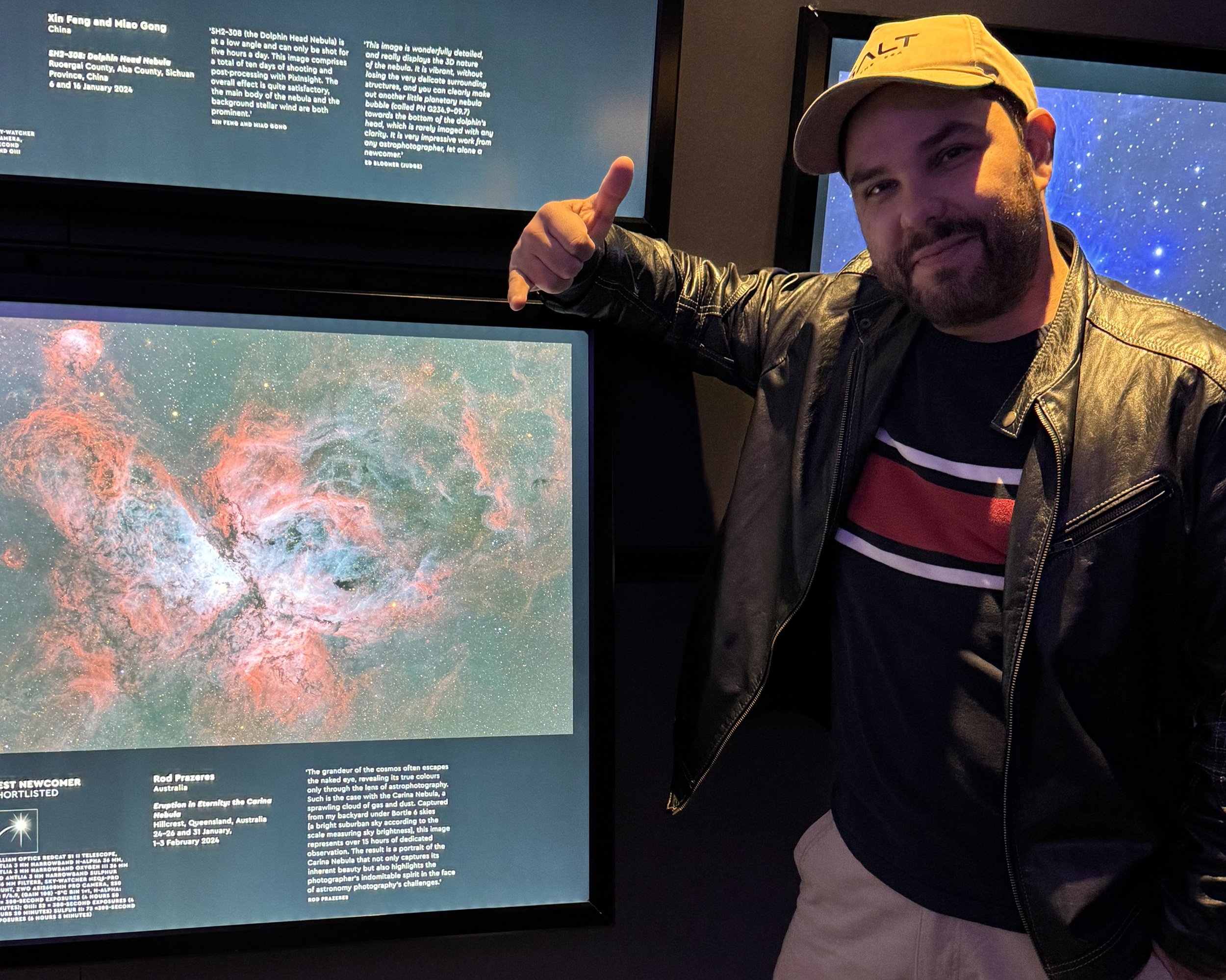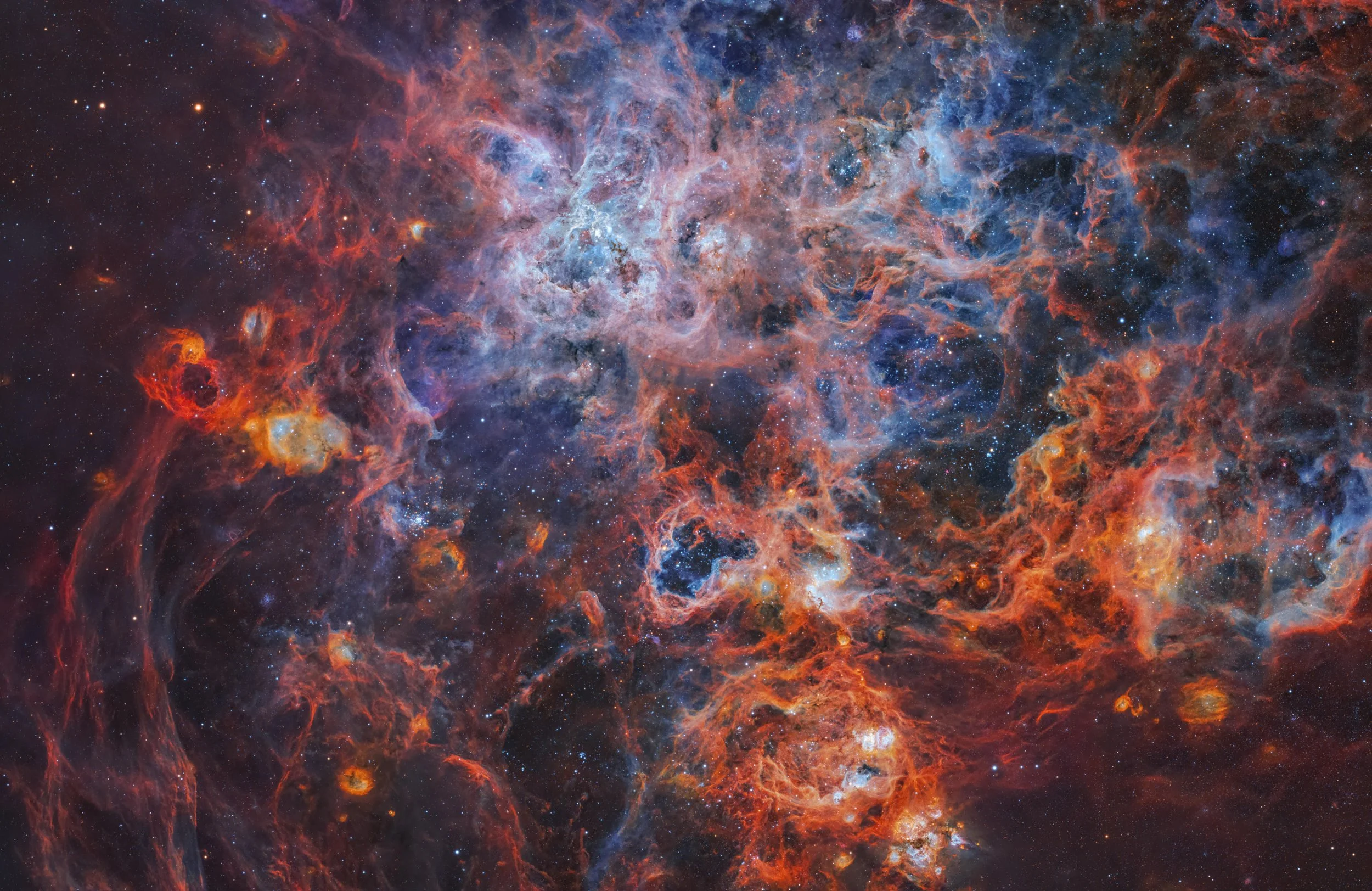From First Light to Eruption of Eternity: Rod Prazeres
Helix Nebula by Rod Prazeres
Rod Prazeres, Brisbane, Australia
I’m a deep‑sky astrophotographer living under the glow of Brisbane’s suburban lights. My fascination with the night sky began like many people’s: a small telescope on the backyard and a wish to see Saturn’s rings. Instead of stopping there, I wanted to understand - and photograph - the colours hidden in the faint clouds of gas far beyond the Solar System. My journey then started in July 2023 - and moving from basic night-sky observation to producing award-winning images has been both challenging and incredibly rewarding and every new project teaches me something. From there, I created an Instagram account, to share my passion with the world and connect with like-minded individuals in the community.
What Made Me Take It Seriously…
While I started learning by watching lots of training videos & reading forums, my foundation was built through direct mentorship, starting with Adam Cohen, who taught me the fundamentals of PixInsight and data processing.
I later expanded my knowledge through advanced workshops with Steeve Body, whose guidance really pushed me to elevate my work. When I realized what I was then capable of producing (which, before then, felt like something only a space telescope could do), I started taking my work seriously and releasing work that blends scientific precision with artistic expression.
Rod’s setup under the glow of Brisbane’s suburban lights.
Early Obstacles and How I Pushed Through
Complex equipment. An SCT is heavy, temperamental and unforgiving of tracking errors. Months of trial‑and‑error balancing, guiding and dew‑control turned frustration into muscle memory.
Light pollution dulled faint detail. I solved this by shifting to narrowband imaging, using filters that isolate specific gas emissions and ignore most city glow, while imaging LRGB only when in remote locations.
Data quality. My early images were riddled with tracking errors, focus issue and noise. Night after night I examined every sub-exposure, deleting the shaky ones and refining the rest through a process called stacking - combining many short photos to mimic one long exposure. That discipline still anchors my workflow today.
A Favourite Memory
In 2024, only ten months after I began imaging, my Carina Nebula image “Eruption of Eternity” was shortlisted for the Astronomy Photographer of the Year (APY16) competition. It was later selected for exhibition and is now displayed in a backlit light panel at the Royal Observatory Greenwich in London until August 2025, an honour I’ll never forget.
Carina Nebula by Rod at the Astronomy Photographer of the Year, Greenwich, London (2024)
I had the opportunity to attend the exhibition in person, and seeing my work illuminated and featured among some of the best astrophotographers in the world was surreal. Standing there, in front of a panel glowing with something I captured from my backyard, was a powerful reminder of how far I’ve come in such a short time. It’s a memory I will most certainly never ever forget.
Gear & How It Has Evolved
My imaging toolkit has evolved over time, but each setup I’ve used has played a part in my development. Straight off the bat, I began with a classic Celestron Ultima 9¼" SCT – a telescope from the 1990s I acquired locally - my first deep dive into longer focal length work – as well as a monochrome setup. While that scope has since been passed along, it taught me a lot, and a few of the images I’m sharing here were captured using it.
These days, I work with two specialised rigs tailored to different types of targets:
The Askar 130PHQ for high-resolution imaging of intricate nebulae and faint supernova remnants.
The William Optics RedCat 51 II for widefield captures, perfect for expansive regions like the Rho Ophiuchi complex or the Vela Supernova Remnant (see image below).
Both setups share a ZWO ASI2600MM Pro monochrome camera, paired with Antlia 3nm narrowband and Baader CMOS-optimized LRGB filters.
I guide the RedCat with a ZWO Mini Guide Scope and use a ZWO OAG-L with the Askar for off-axis guiding.
At home in my Bortle 6 backyard, I mount everything on a Sky-Watcher NEQ6-Pro, while for remote dark sites I rely on the compact but powerful Sky-Watcher Wave 150i.
Both systems are integrated via ASIAIR, giving me full remote control and sequencing.
Vela SNR by Rod Prazeres
Workflow in Plain Language
My post-processing lives mostly in PixInsight and follows a clear, step-by-step path that turns raw data into a polished image. Without drowning newcomers in jargon, the most important part is that I first review every single exposure and delete anything blurred by wind, clouds or weather condition in general – or due to any tracking errors. Good pictures start with clean frames. The remaining shots are calibrated and “stacked” with PixInsight’s Weighted Batch Preprocessing, letting the software combine hundreds of faint signals into one noise-free master file.
Additionally, I build animations in Adobe After Effects, using layered high-resolution stills. The process involves subtle zooms, pans, and rotational movements to simulate drifting through space. The end goal is to transform a still image into a cinematic experience, something that invites the viewer to fly through the cosmos rather than just look at it.
Made in Adobe After Effects, by Rod Prazeres
Creative Vision & What Inspires Me
I start every project with a quick tour of AstroBin. I scroll through uploads, save images that hit me visually, and note any scientific nuggets in their descriptions and explore potential framing ideas. From there I ask three questions:
Is this target high enough from my latitude to image well?
When is it in season, and will bright Moon or city light ruin it?
Has it been photographed to death, or can I add something fresh?
Bright show‑pieces like the Helix Nebula get pencilled in for backyard sessions, while obscure gems - say, a faint supernova remnant - get reserved for dark‑sky trips.
Ultimately, my aim is simple: explore the universe and bring back postcards. If an image lets someone feel how vast space is, and maybe ignites their own curiosity, then I’ve done my job.
Sombrero Galaxy by Rod Prazeres
Challenges & Rewards
Biggest challenges? Weather tops the list: weeks of cloud can wipe out an entire lunar cycle. Next come the limits of light‑polluted skies and the occasional gremlin in cables or software. When that happens, I remind myself of the images I’ve already captured and the possibilities still waiting; the idea that a backyard rig can reveal things once reserved for multi‑million‑dollar observatories is powerful motivation.
Greatest rewards? Nothing beats watching a finished image emerge - seeing delicate filaments appear where there was once only noise, then sharing that result with the community. Recognition from peers and publications is icing on the cake; it proves the hard nights are worth it and keeps me pushing for the next breakthrough.
Rosette Nebula by Rod Prazeres
A Significant Turning Point
After a set of one‑on‑one workshops, I realised just how far amateur equipment can go. Learning a disciplined workflow showed me that patience and technique, more than deep pockets, unlock professional‑grade results. Since then, every project has been an experiment in squeezing the most out of modest gear and sharing those discoveries with anyone who dreams of imaging the sky.
Advice for Newcomers
Start simple, learn deliberately, and don’t fear mistakes.
Even a tripod‑mounted DSLR can teach framing, focus, and exposure. Invest time in understanding post‑processing - good data is wasted without good software skills. Most of all, let curiosity - not chasing likes - drive you.
What’s Next?
I’ve recently acquired a caravan, opening the possibility of weekend trips to far‑flung dark sites I couldn’t reach before. My immediate goal is to tackle notoriously faint southern targets, while refining my workflow so setup and teardown are as enjoyable as the imaging itself. Guiding newcomers through that learning curve, online or around a campfire, is part of the adventure.
Tarantula Nebula by Rod Prazeres








